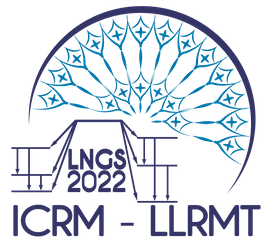Speaker
Description
Surface glacier ice maintains historical records of global fallout radionuclides from the atmospheric nuclear weapon testing (NWT) period. These radionuclides have found important applications for developing and/or validating ice core chronologies and ice flow models. Among the artificial radionuclides, plutonium-239 (239Pu, half-life: 24 100 yr), plutonium-240 (240Pu, half-life: 6 561 yr), cesium-137 (137Cs, half-life: 30.05 yr) and tritium (3H, half-life: 12.31 yr) have found important use in dating ice cores with ages up to 70 yr old. Uranium-236 (236U, half-life: 2.3 107 yr) is less reported, mainly due to the high analytical demands to detect it. Pu and U are present typically at very low levels in ice, and needs to be purified from the matrix and potential interferences in order to measure them accurately. 137Cs is as well present at trace levels in ice, and usually needs to be pre-concentrated before any measurement can be done.
We present a radiochemical procedure for the sequential determination of 3H, 137Cs, Pu and U radionuclides in ice samples. The method was validated using in-house spiked water samples and a certified reference material (IAEA-381). After melting, the ice samples are acidified to pH 2. An aliquot of 50 mL is distilled for 3H analysis. The distillate is counted with an ultra-low level LSC Quantulus 1220. A detection limit for 3H of 1.1 Bq kg-1 was achieved for a counting time of 1440 min. About 20 mL of the sample is taken to analyze the U content in a sf-ICP-MS Element 2. This information is used to calculate the U separation yield and to quantify 236U in the final U fractions. The remaining water is spiked with stable Cs (about 1 mg) and 242Pu (0.3 pg) as yield tracers. Cs isotopes are extracted on a AMP-PAN resin, then eluted in a 15 mL geometry and finally counted with high-resolution gamma spectrometry using HPGe detectors. The Pu and U radionuclides are concentrated by co-precipitation with Fe(OH)3. After dissolution, Pu and U radionuclides are separated and purified using the extraction chromatography resins TEVA and UTEVA. Pu and U radionuclides are measured with a MC-ICP-MS Neptune.
The results of the method validation, including accuracy and precision for each radionuclide, are presented. We show some results obtained in surface ice samples collected at the Aletsch Glacier, in Switzerland. In this particular study, we aimed at investigating the absolute age of glacier surface ice. For Pu and U radionuclides, the atom ratios 240Pu/239Pu and 236U/239Pu in glacial ice are also reported.

